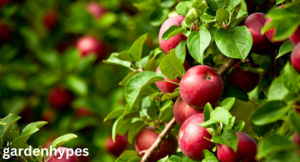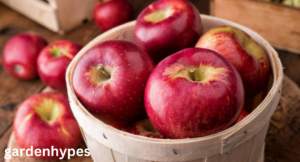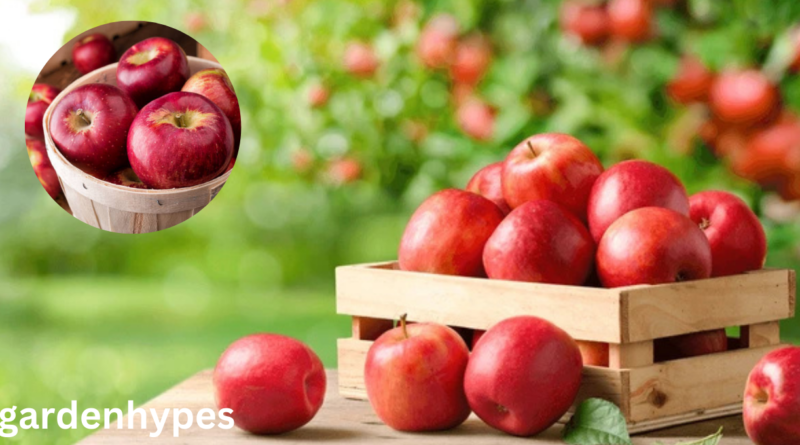Apple Season A Fresh Fall Harvest
Introduction
There’s something magical about apple season. As summer fades and crisp autumn air begins to set in, orchards across the world burst into life, inviting families, farmers, and food lovers to celebrate the harvest of one of the most beloved fruits. Apple season isn’t just about picking fruit—it’s about tradition, culture, flavors, and the joy of gathering together. Imagine walking through rows of trees heavy with fruit, the smell of fresh apples filling the air, and the crunch of leaves beneath your feet. That’s the charm of apple season—it feels like nature’s way of welcoming us into fall.
click in link Melon Variety
Apples have been grown and cherished for centuries, making them more than just a snack. They symbolize abundance, health, and even folklore, often being at the center of traditions, fairy tales, and celebrations. Whether you enjoy them fresh off the tree, baked in a pie, or pressed into cider, apples carry a sense of nostalgia and comfort that few other fruits can match. Apple season is not just about food—it’s about connection, from farmers tending orchards to families creating memories.
Why Apple Season is Special
Apple season is unique because it’s not just a harvest—it’s a community event. Unlike some crops that are harvested quietly, apples are celebrated through festivals, orchard visits, and family traditions. There’s something about biting into a crisp apple picked fresh from the tree that can’t be matched by store-bought fruit. It’s fresher, juicier, and packed with flavor that tells you, “Yes, this is the season.”
Beyond taste, apple season signals the arrival of cozy fall traditions—pumpkin carving, hayrides, warm apple cider, and evenings by the fire. It’s a season where nature slows down, and people come together. Farmers open their orchards for visitors, children learn where their food comes from, and families share meals made with freshly harvested apples. This communal aspect is what makes apple season feel so warm and inviting—it’s not just about eating apples, but about celebrating life’s simple joys.
The History of Apple Harvesting
Apples have been around for thousands of years, with their origins tracing back to Central Asia. Over time, they spread across Europe and eventually to North America, where they became a household staple. In ancient times, apples weren’t just valued for their taste but also for their symbolism. In Greek mythology, apples were considered sacred, while in Norse mythology, they were thought to provide eternal youth.
The tradition of apple harvesting has deep roots in farming culture. In the past, apple picking wasn’t just a leisurely activity—it was a vital part of preparing for the winter. Families would gather apples to store, preserve, and ferment into cider. These traditions have carried into modern times, though today apple picking is often more of a recreational outing than a necessity. Still, the act of walking into an orchard and handpicking apples connects us to the same rhythms of life that our ancestors followed.
When is Apple Season?
The timing of apple season depends on where you live, but in most parts of the world, it takes place in the late summer through fall. In the Northern Hemisphere, apple season generally begins in late August and can last through November, while in the Southern Hemisphere, it occurs around February to May. The length and timing of the season depend heavily on the climate, apple varieties, and farming practices.
Some apples ripen early and are ready by late summer, while others are best harvested in late fall. This staggering of ripening times means apple season lasts for several months, allowing for a wide variety of flavors and textures throughout the harvest period. If you’ve ever wondered why you can find different apples in stores at different times, it’s because of these harvest cycles.
Early, Mid, and Late Harvest Apples
Not all apples ripen at the same time, which is why apple season can feel so extended. Early-season apples, like Gala and Ginger Gold, are usually harvested in late summer. They tend to be sweeter and softer, making them great for eating fresh.
Mid-season apples, such as Honeycrisp and McIntosh, typically ripen in September and October. These apples are often a balance of sweet and tart flavors, perfect for snacking or using in baking.
click in link Melon Variety

Late-season apples, including Fuji and Granny Smith, are harvested toward the end of fall. They are firmer and more tart, which makes them excellent for baking, cooking, and storing through the winter.
By understanding these different harvest times, you can plan your orchard visits or grocery shopping trips to enjoy apples at their peak freshness.
Factors That Affect Apple Season Timing
Several factors influence when apple season starts and ends. Climate is one of the biggest—regions with cooler summers often have later apple harvests, while warmer areas see apples ripening sooner. Rainfall, soil quality, and even altitude can affect when apple trees produce ripe fruit.
Another factor is the specific apple variety. With over 7,500 varieties grown worldwide, each has its unique growing schedule. Farmers often stagger planting different varieties so they can extend the harvest season and provide a steady supply of fresh apples.
In recent years, climate change has also played a role, shifting apple harvest times earlier in some regions. This means that while we can generally predict apple season, the exact timing can vary slightly from year to year.
Different Types of Apples
Walking into an orchard or even the produce section of a grocery store, you’re met with an array of apple types—some sweet, some tart, some crisp, some soft. Each apple variety has its own personality, suited for different uses. Choosing the right apple can make all the difference depending on whether you want to eat it raw, bake it into a pie, or press it into cider.
Sweet Varieties
Sweet apples are perfect for snacking. Popular sweet varieties include Fuji, Gala, and Red Delicious. These apples are often juicy, with a crisp bite and natural sugar content that makes them feel like nature’s candy. Fuji apples, for instance, are known for their honey-like sweetness, while Gala apples are milder but just as refreshing.
These types are great for eating fresh, but they’re also delicious in salads, where their sweetness pairs well with savory ingredients like cheese and nuts. Children especially love sweet apples since they feel like a treat without added sugar.
Tart Varieties
On the other end of the spectrum are tart apples like Granny Smith, Braeburn, and Jonathan apples. Their tangy flavor makes them ideal for baking because the acidity balances out sweetness in desserts. Imagine biting into a warm apple pie—the sharp bite of Granny Smith apples is what makes it so satisfying.
Tart apples are also excellent for making cider, as their acidity helps produce a balanced drink. They tend to store well, making them a practical choice for keeping apples through the winter months.
Best Apples for Cooking vs. Snacking
When it comes to choosing the best apple, it really depends on what you’re planning to do with it. Sweet apples are best for raw eating, while tart apples shine in cooked dishes. Some apples, like Honeycrisp, are versatile enough to be enjoyed both fresh and cooked.
Here’s a quick guide:
- Best for Snacking: Fuji, Gala, Honeycrisp
- Best for Baking: Granny Smith, Braeburn, Jonathan
- Best for Cider: McIntosh, Cortland, Kingston Black
Knowing these differences helps you get the most flavor out of your apples and ensures your recipes turn out just right.
Health Benefits of Apples
The old saying, “An apple a day keeps the doctor away,” might sound cliché, but it holds more truth than you think. Apples are not only delicious but also packed with nutrients that contribute to overall health.
Nutritional Profile of Apples
Apples are low in calories but rich in fiber, making them a satisfying snack that supports digestion. A medium-sized apple contains around 95 calories, 25 grams of carbs, and 4 grams of fiber. They also provide essential vitamins like vitamin C, potassium, and small amounts of vitamin K and B vitamins.
The skin of apples is particularly nutrient-dense, containing antioxidants and plant compounds like quercetin, catechin, and chlorogenic acid. These compounds help reduce inflammation, protect heart health, and may even support brain function.
Apples and Long-Term Health
Eating apples regularly has been linked to several long-term health benefits. For one, their high fiber content supports gut health and helps lower cholesterol levels, reducing the risk of heart disease. Studies suggest that apple consumption may also reduce the risk of type 2 diabetes due to their polyphenol content, which helps regulate blood sugar.
Apples may also contribute to weight management since they are filling but low in calories. Replacing processed snacks with an apple can help reduce calorie intake without feeling deprived. Additionally, the antioxidants in apples have been linked to a reduced risk of certain cancers and improved immune function.
Simply put, apples aren’t just tasty—they’re a powerhouse of health benefits that make them worth enjoying year-round, especially during peak season when they’re at their freshest.
Fun Activities During Apple Season
One of the reasons apple season is so beloved is that it’s about more than just fruit. It’s a season filled with fun, outdoor activities that bring families and communities together. Apple orchards often transform into lively gathering places, offering experiences that go beyond picking apples.
Apple Picking Traditions
Apple picking is perhaps the most iconic activity of the season. Families head to orchards, baskets in hand, to pick their own apples straight from the trees. There’s a joy in choosing the perfect apple, twisting it off the branch, and tasting it on the spot. It’s not just about the fruit—it’s about the experience of being outdoors, surrounded by nature, and sharing the moment with loved ones.

Many orchards also make apple picking educational by teaching visitors about different varieties and how apples are grown. This makes it a fun and informative outing for children, helping them understand where their food comes from.
Family-Friendly Apple Farm Activities
Beyond picking, apple farms often host a range of seasonal activities. From hayrides and corn mazes to petting zoos and cider tastings, orchards turn into autumn playgrounds. Kids can enjoy face painting, pumpkin picking, and games, while adults savor warm apple cider or fresh donuts dusted with cinnamon sugar.
click in link Melon Variety
Some farms even host festivals with live music, craft vendors, and cooking demonstrations, making apple season feel like a true celebration of harvest time. These activities help build community spirit and create lasting memories for families year after year.
FAQs
- When is the best time to go apple picking?
The best time to go apple picking depends on the variety you’re after. Early-season apples, like Gala or Ginger Gold, are ready by late August. Popular mid-season apples such as Honeycrisp and McIntosh are perfect in September. If you want tart apples like Granny Smith or Fuji, plan for late October into November. To make the most of your trip, always check with your local orchard—they’ll let you know which varieties are at their peak that week. - Which apples are best for baking pies?
Granny Smith apples are the go-to choice for pies because of their tart flavor and firm texture that holds up well in the oven. Braeburn, Jonathan, and Honeycrisp are also excellent options. If you want a pie with a balance of sweet and tart, consider mixing two varieties, such as Granny Smith with Honeycrisp. This creates depth of flavor and prevents the filling from becoming too mushy or too sweet. - How long can freshly picked apples last?
Fresh apples can last anywhere from 2 weeks to 3 months, depending on the variety and storage method. Crisp, firm apples like Fuji and Granny Smith tend to last longer, while softer varieties like McIntosh are best eaten within a couple of weeks. For longer storage, keep apples in a cool, dark place—ideally in the refrigerator. Store them in a breathable bag and away from other fruits, since apples naturally release ethylene gas that speeds up ripening. - Are apples really good for weight loss?
Yes, apples can be a helpful snack for weight management. They’re low in calories (about 95 calories for a medium apple) but high in fiber, which helps you feel full for longer. Eating an apple before meals may even reduce overall calorie intake. Plus, apples satisfy a sweet tooth naturally, making them a healthier alternative to processed snacks and desserts. - What’s the difference between organic and non-organic apples?
Organic apples are grown without synthetic pesticides or fertilizers, making them a preferred choice for people who want more natural produce. Non-organic apples may be treated with pesticides to protect against pests and diseases, though they are thoroughly washed before reaching stores. If you’re concerned about pesticide residue but can’t always buy organic, washing apples well and peeling them is a good alternative. Both types still offer the same great nutritional benefits.
